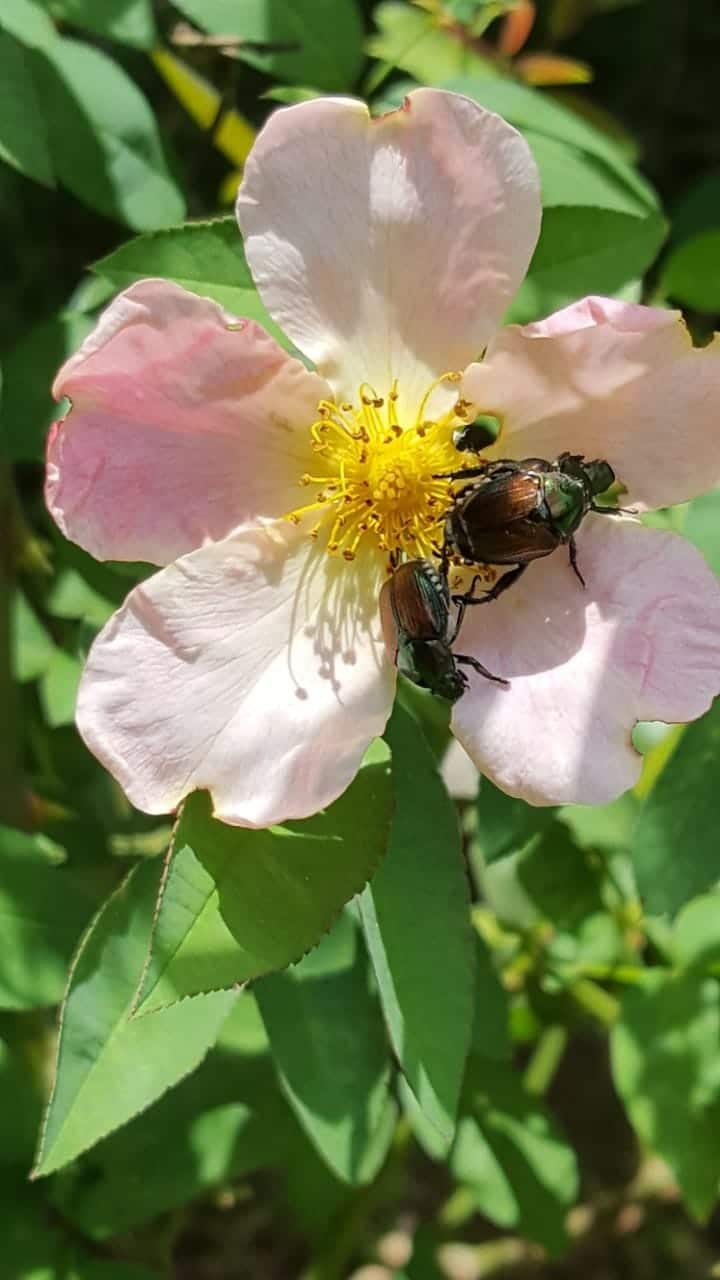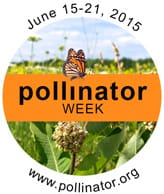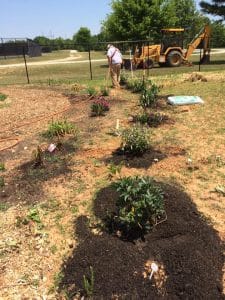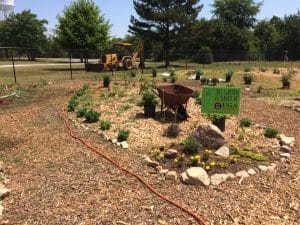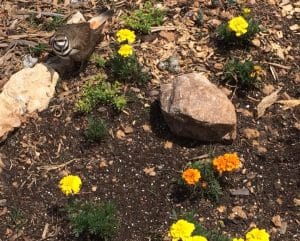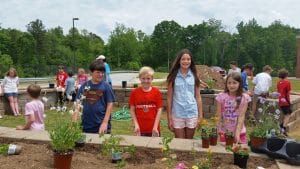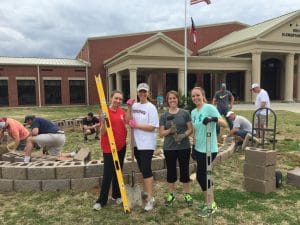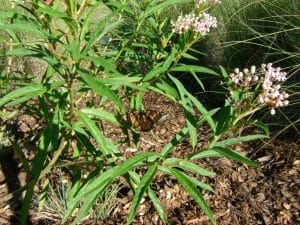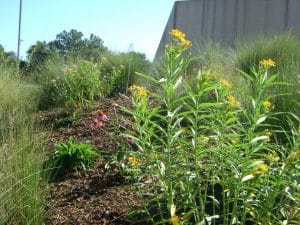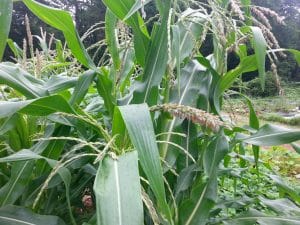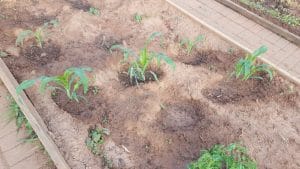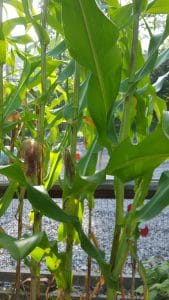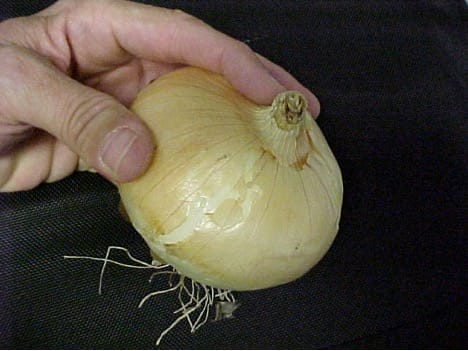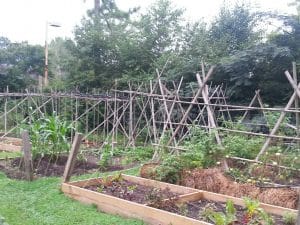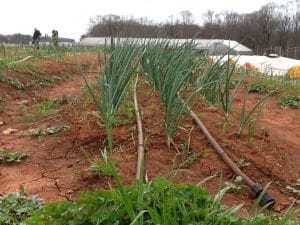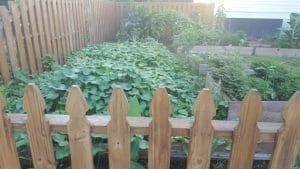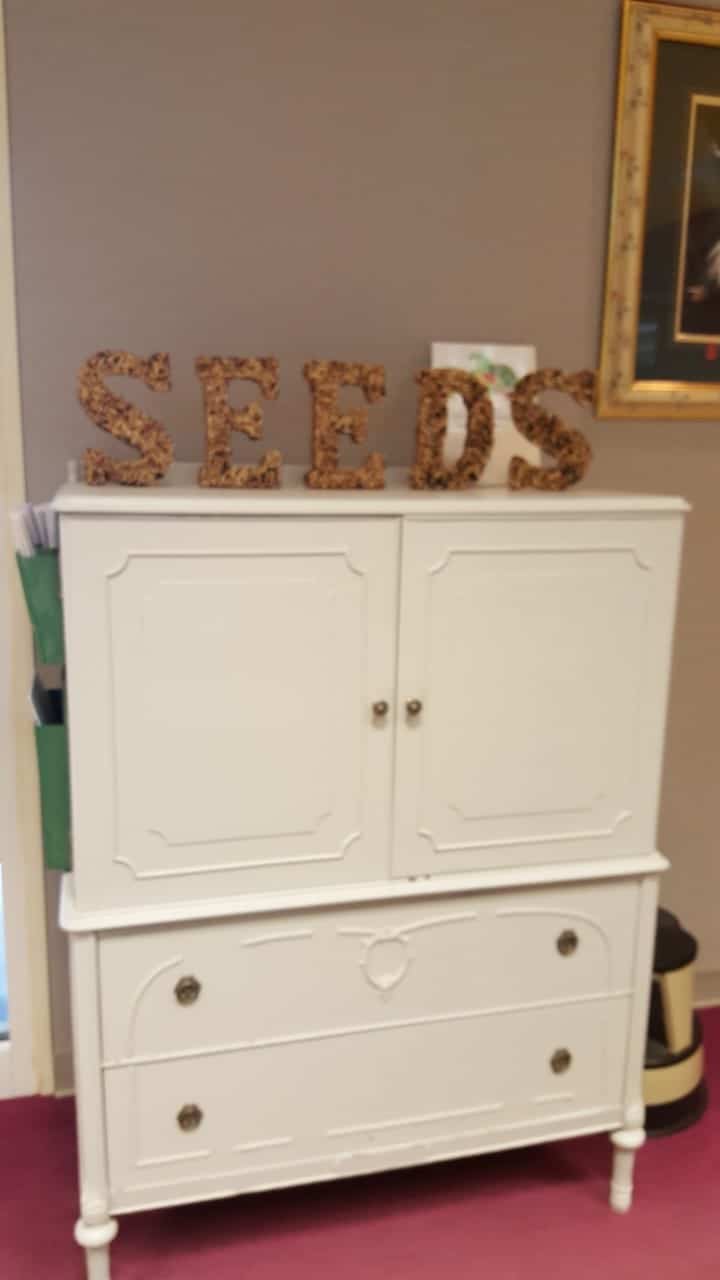They are indeed back. You have probably already seen Japanese Beetles (Popillia japonica) in your landscape. They enjoy munching the leaves of roses, maple trees, cherry trees, peaches and grapes. They actually are a pest to over 300 plant species. A single beetle doesn’t do much damage. Unfortunately once a beetle finds a food source other beetles soon follow. It is the groups of beetles that do real damage.
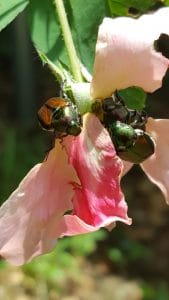
Japanese beetles first arrived in the United States around 1917. As with many non-native species, in their home country of Japan they are not a major problem. This pest causes damage in the adult beetle stage as well as the larval stage. The larvae, or grubs, live in the soil and can do damage to plant roots.
We often get questions from gardeners about these pests and thought it might be helpful to share them with you:
Do you need to worry about this pest?
The Japanese Beetle season lasts 4-6 weeks, so realize they won’t be around for very long. They are not a major pest of vegetable gardens and generally eat the leave margins leaving a lacy-type leaf. They sometimes also eat petals and can damage fruit.
Do the Beetle Traps Work?
Yes, the beetle traps do work by attracting beetles from all over your area and bringing them to your yard! The traps contain a pheromone, a sex attractant, that can attract beetles that may not have visited your garden on their own.
If you decide to use traps, do not put them in the middle of your garden as you would just be bringing in additional numbers of the pests. Also, the traps will need to be emptied often. The dead beetles give off an ammonia scent that will repel other beetles.
Wouldn’t it be nice if your neighbors put out traps to attract your beetles to their yards?
Is Their a Non-Chemical Control?
Most home or community gardeners can control Japanese Beetles by simply picking the insects off the plants and dropping them in a container of soapy water. By regularly scouting for these insects and removing them, you will prevent any real damage. This is a great job for kids.
What if I Decide I Need an Insecticide?
There are insecticides available to kill Japanese Beetles but realize that the chemicals don’t affect just those beetles but possibly beneficial insects as well. Contact your local UGA Extension Agent for a specific chemical recommendation. As with all pesticides you will want to follow the label directions to the letter.
Wishing you a Japanese Beetle free garden!
